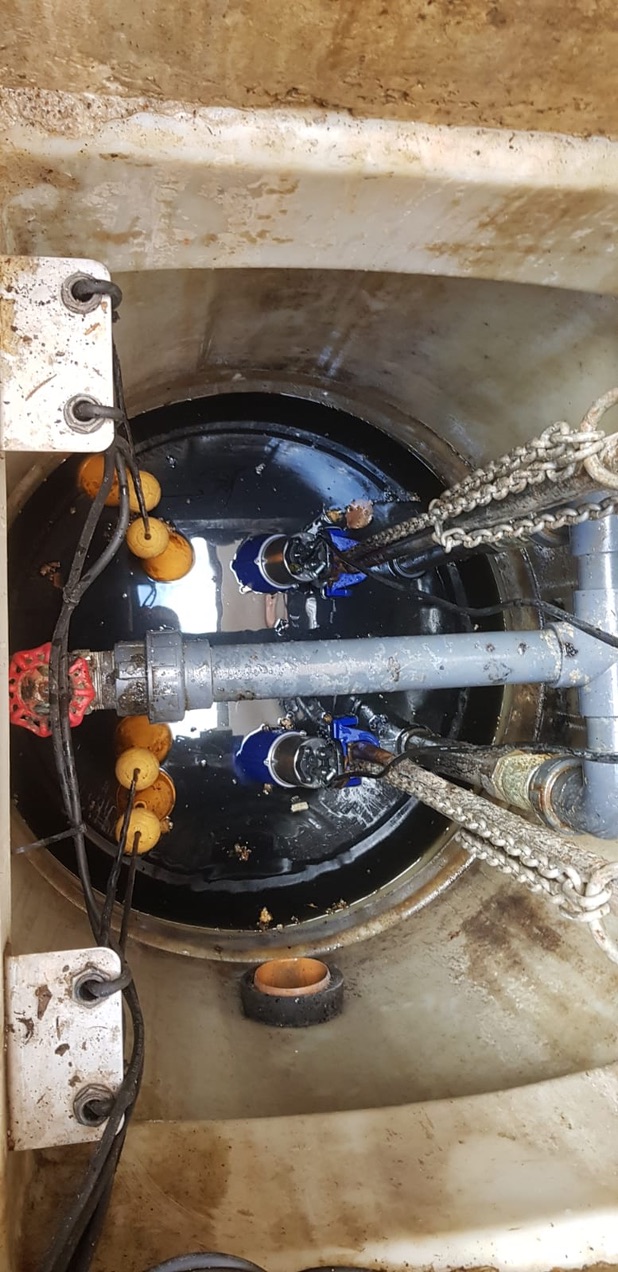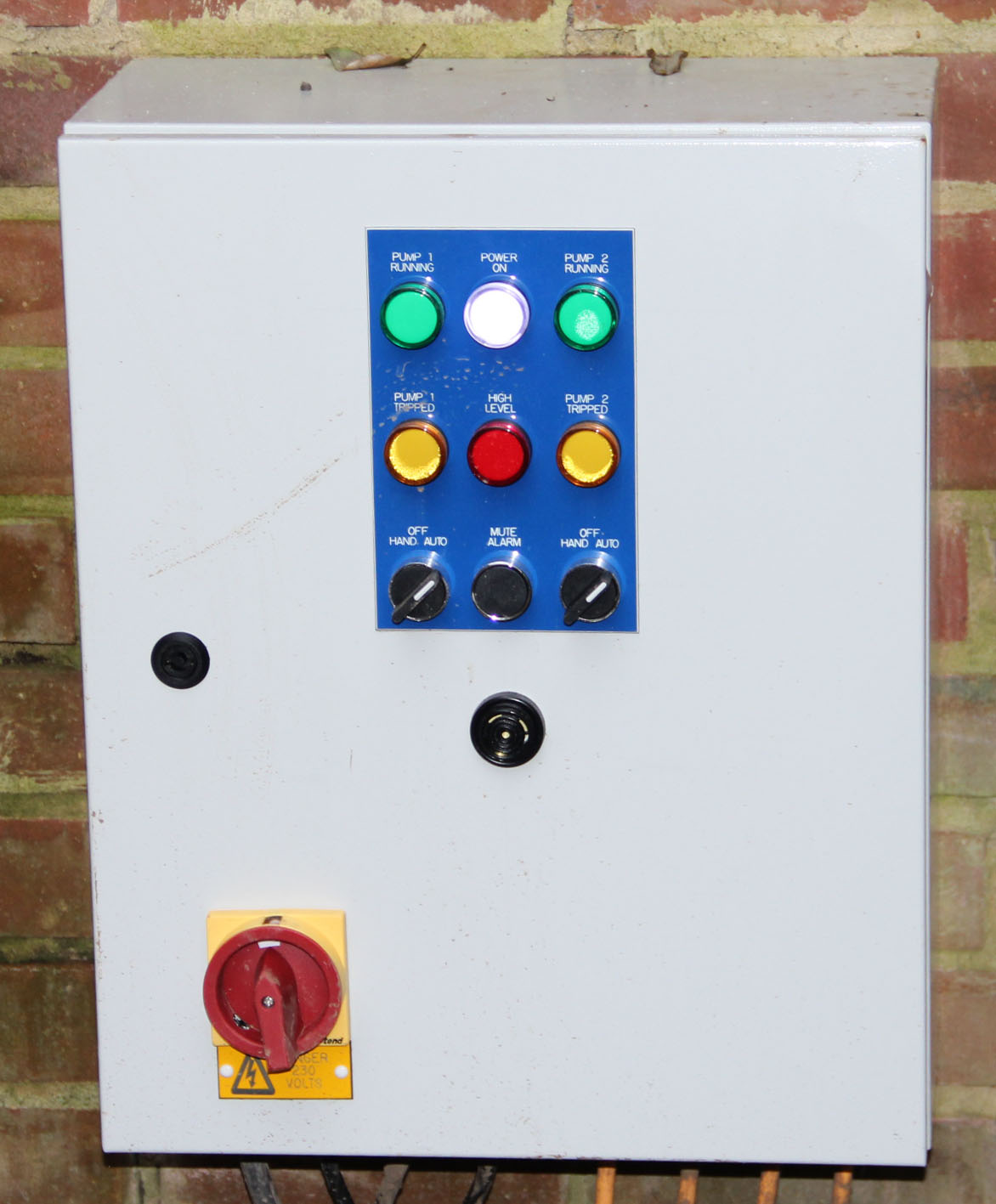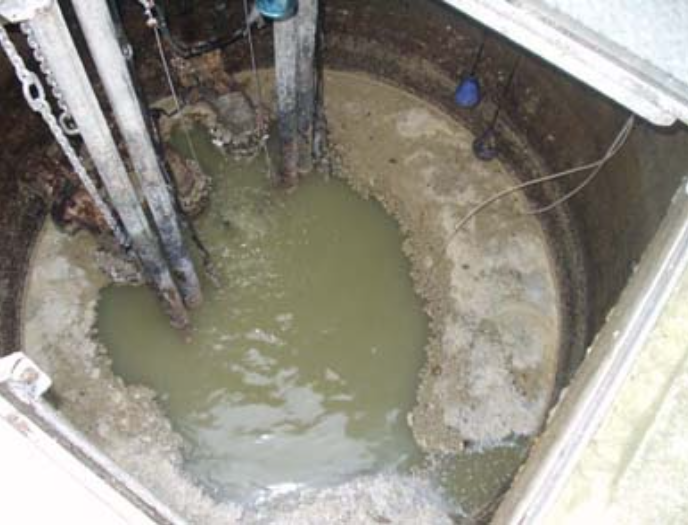What is a pumping station?

A pumping station, roughly speaking, is a chamber that collects treated wastewater or surface water runoff to redistribute it elsewhere. Inside the chamber are pumps that pump this water through pipes or mains to another location.
How do they work
Generally speaking they contain guide rails to guide the pumps down to the bottom or lift them out again. The guide rails are accurate and guide the pump down to and connect snug to the outfall pipe that leads to the main sewer on the main public road.
Float switches are there to stop the pump when the level of the sewage gets to the bottom; before it uncovers the pumps, we don’t want the pumps running dry.
The float switches activate again when the sewage and water level reaches a certain height below the incoming pipe or sewage.
If the sewage gets too high (above the ‘invert’ or the level where the sewage flows in), we have another float switch called the high-level alarm.
Within these boundaries, the pump engineer would set the pump float switches.
Basically, three float switches are low-level, high-level and high-level alarms.
You can have two or three pumps installed as far as pumps go, providing the pumping station is large enough.
Plastic pumping stations installed without concrete surround can and often do implode because of ground movement.
The power of the pumps depends on the electric power available. The distance the pumps have to pump the sewerage, and the low or steep gradient; after contemplating the distance and the gradient to make the decision on the type of pump. Also, depending on the work the pumps have to do.
This Pumping Station contains plastic bags, grease fat, oil, nappies, polythene cups, and rubbish.
Before installing the Pumping Station

Check for surface water
We need to check, via a survey, to confirm or eliminate whether rainwater, surface water, or roof water is entering the system, indirectly or directly, to assess the workload the pumps have to do.
We need to check if the public sewer system is a combined system. Allowing surface water mixed with sewage to be pumped into their system. (it is possible but unlikely.)
See our case study entitled 'Surface water pollution'
Make an informed choice about the kind of pump you would like
There are indeed pumps that can chop up plastic bags, plastic cups, and tin cups; we should sit down with the owners and explain the consequences of plastics being chopped up into small pieces in order to flow better into the public sewer.
The reason I mention this, as you’re probably aware, according to “pollution” into our rivers on iPlayer, bits of plastic and plastic bags are getting into our rivers and eventually into our seas.
Be armed with information to prevent problems

The most problematic substance in pumping stations is fat, grease and oil. This should be explained to our clients as it sticks to the float switches to such an extent that they can’t function properly. They do not switch off the pump, or they don’t stop the pump from running the pumping station dry.
A simple fat/ grease trap installed in the pipe from the kitchen before the pumping station; Will remove grease fat and oil provided it is the right size and emptied regularly. When 25 to 30% full to enable separation and maintained correctly.
The grease trap does not only save you money. It saves you the disruption, downtime and inconvenience of having the tanker there at the too often. The times you couldn’t use the kitchen sink, the dishwasher, and all your toilet facilities. The grease trap is definitely worth its money.
What is a pumping main?
The term used to describe the pipe or the outfall pipe that takes the sewage and water to the main sewer – we call it – a pumping main; you might find it interesting to see our information on our pumping stations and pump mains page of our website.

